The sight of acorns on the ground is a sure sign that the fall foraging season has begun! Whether you live in a city or somewhere deep in the countryside, you’ve probably seen squirrels rushing around in the fall with acorns clutched between their teeth. This is because squirrels rely on the nutritious nut to keep them alive in the sparser winter months ahead. Well, it turns out that those same nutrients can also be useful to humans, who have been foraging for acorns for thousands of years.
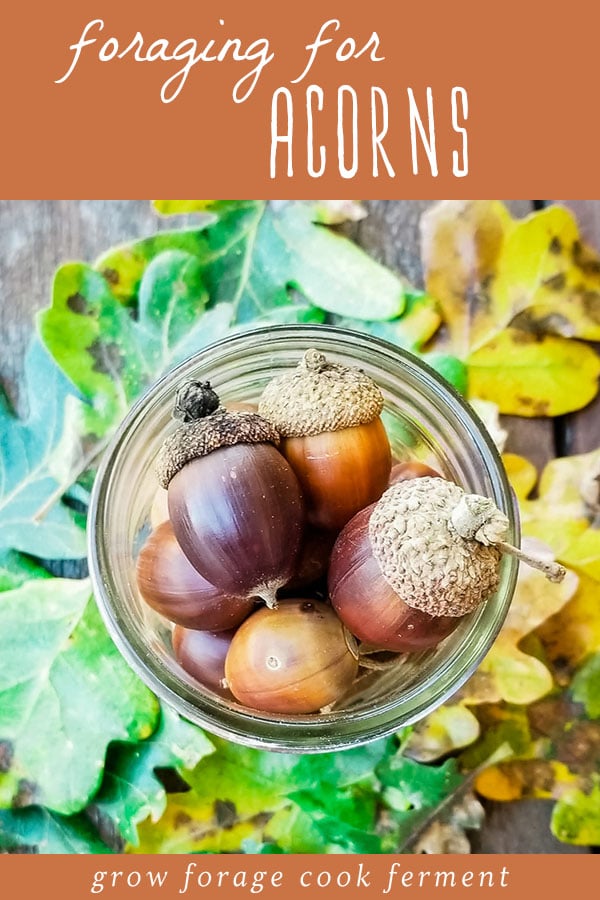
Want to save this post for later?
Wildcrafting Weeds
If you want to learn more about the edible and medicinal weeds that surround us and how to use them, check out my eBook: Wildcrafting Weeds: 20 Easy to Forage Edible and Medicinal Plants (that might be growing in your backyard)!
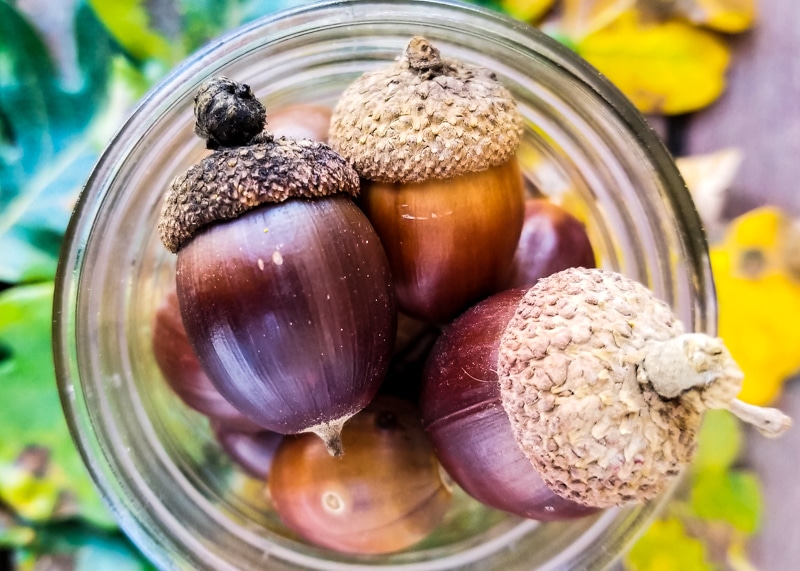
How to Forage for Acorns
Though the arduous processing requirements for acorns have limited their widespread popularity, the hard-to-crack nuts have regained attention in recent years for their nutritional benefits.
The fruit of an acorn is a complete protein, and it also contains starches and fats. What more would you want as you’re getting ready for a long, cold winter?
In this post, I will share some information about foraging and processing acorns, as well as links to some tempting recipes. I hope that after reading, you’re inspired to shell out enough time to give acorns a try!
Identifying Acorns
Acorns are the seeds, or fruits, of oak trees. The two main parts of an acorn’s exterior are the cupule (the acorn’s cap) and the pericarp (the outer, hard shell). Together, these components make the acorn easy to identify, because they look like the seed is wearing a hat!
While it is simple to identify an acorn from other tree seeds, remember that there are hundreds of different species of oak trees. Therefore, there are many different kinds of acorns. Fortunately for foragers, all acorns are edible! However, some people find certain acorns more palatable than others.
If you want to identify oaks in your area by species, you may need to consult a local tree guidebook (here are good ones for western and eastern states).
If you’re alright with just having a general idea about what acorns you are foraging, though, you can quickly learn about the two major groups of oak trees: the white oaks, and the red and black oaks.
While most oak trees have simple, lobed leaves, you can tell the white oaks apart from the red and black oaks by their kinds of lobes.
On a white oak leaf, the lobes are smooth and rounded, while red and black oaks have sharper lobes that culminate in a point.
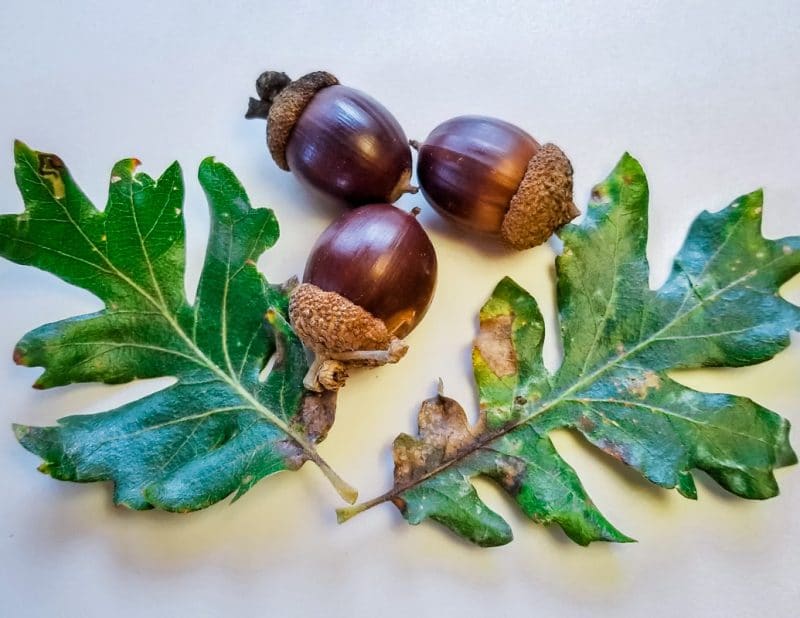
Acorn Foraging Tips
White oaks produce seeds that mature in one season and therefore tend to contain fewer tannins.
This means that acorns from white oaks are sometimes less bitter than those from red and black oaks and may require less leaching (more about leaching soon!).
Red and black oaks take two growing seasons to mature, and their acorns are often more bitter. This is because the longer intervals between seed maturation means there is more time for the tannins to accumulate.
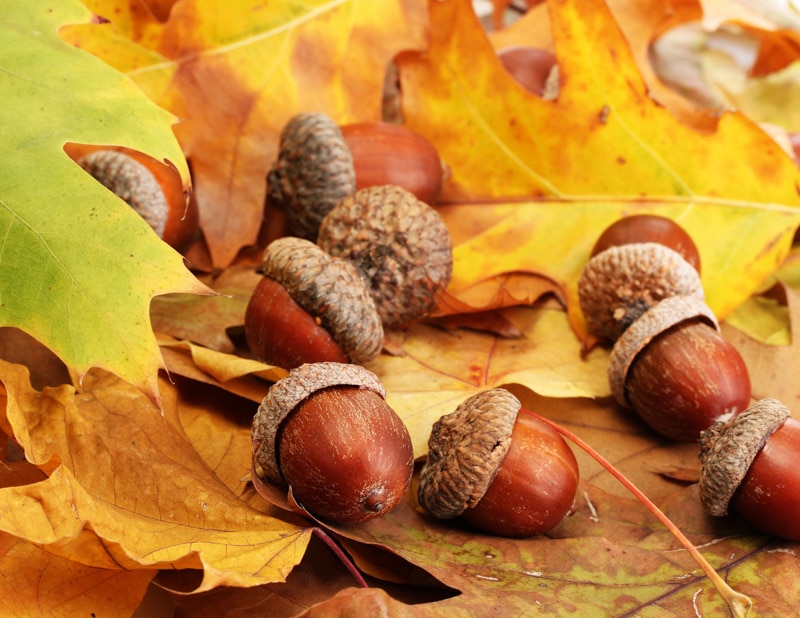
The time for foraging acorns is roughly late September through October, but keep an eye on your local oaks, as ripening can vary by species and climate zone. When acorns turn brown and drop to the ground, they are ready to be gathered.
You may not need to go far at all in order to find acorns! Check your local parks and other public green spaces for oak trees.
I found lots of acorns scattered on the sidewalk on my last walk through my neighborhood. The neighbor was trying to rake them out of the way so people wouldn’t trip!

Bring a mesh bag with you, and keep the acorns in it until you’re ready to use them. They will mold in a plastic bag.
When collecting acorns off the ground, avoid any that are clearly discolored, as this is a sign of fungus and rotting.
Also, don’t take acorns with little holes in their shells. These indicate pest infestation, so unless you’re keen on insect protein (weevils, anyone?), avoid acorns that have been excavated.
How to Process Acorns for Eating
Foraging for acorns is simple if you know where to find an oak tree or two. When you embark on the more time-consuming steps involved in processing acorns, try to remember that at least you probably didn’t have to work hard to collect them!
There are many ways to process acorns, so I’m just going to offer a broad overview of the steps, along with some tips. The most important thing is that you try your hand at processing acorns and decide what techniques work best for you.
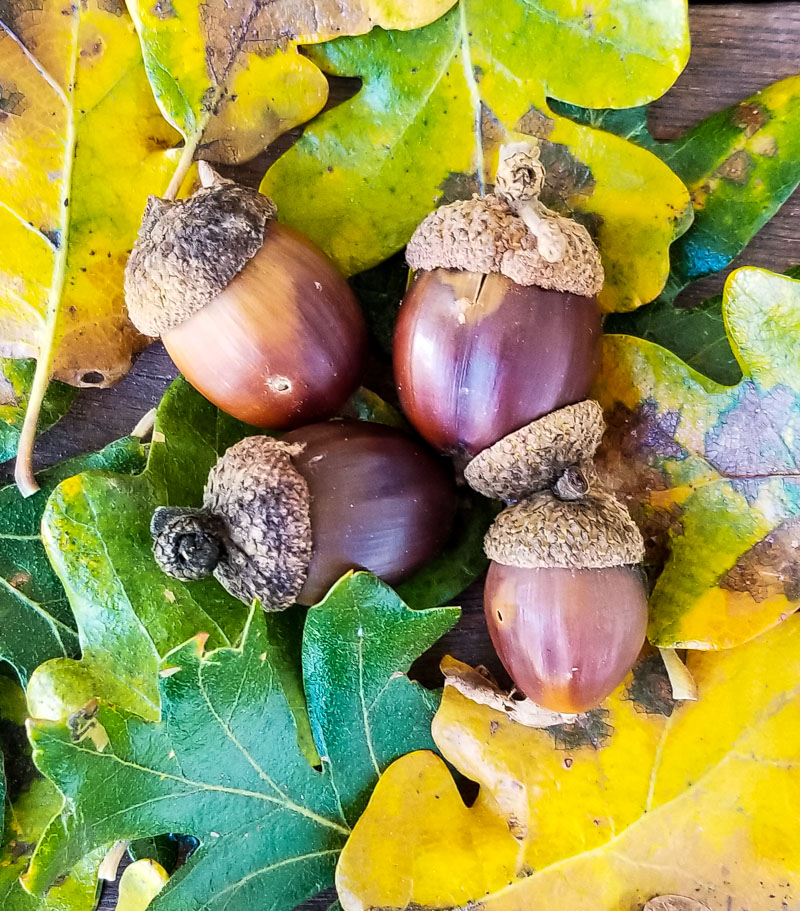
Sorting & Drying
First, sort your acorns by placing them in water. The acorns that float to the top should be discarded, because their lightness indicates that the nut inside is damaged.
The next step is to dry the fruit of the acorn while it is still inside the shell. This shrinks the nut slightly, pulling it away from the shell and making the acorn easier to crack later.
Spread your acorns out onto a tray, and then choose a drying method. Some options include letting them sit in the sun for a few days, or resting them next to a heat source such as a woodstove or electric heater.
Shelling & Grinding
Once the acorns are dry, some people use a hammer and a woodblock to crack them open, placing the pointy end of the seed against the woodblock and tapping the acorn on the rounded end.
Other people shell a dozen or more acorns at once, using heavy blocks and other makeshift methods based on what’s on-hand.
After the acorns are shelled, grind or mash them according to the recipe you’re following. (I’ll include acorn recipes at the end of this post!)
Leaching
In order to make acorns edible and palatable, it is essential that you leach out the tannins. This is done by soaking the acorn mash in water and periodically switching out the water until the tannins are removed.
Depending on the bitterness of the acorns and whether you choose cold or hot leaching, this could take a few hours to a few weeks. Some people have even reported using their (clean) toilet tanks to leach the acorns, so I’ll let you ponder that!
There are a number of videos online that offer helpful visuals for processing acorns. This is a great way to start deciding what method works for you.
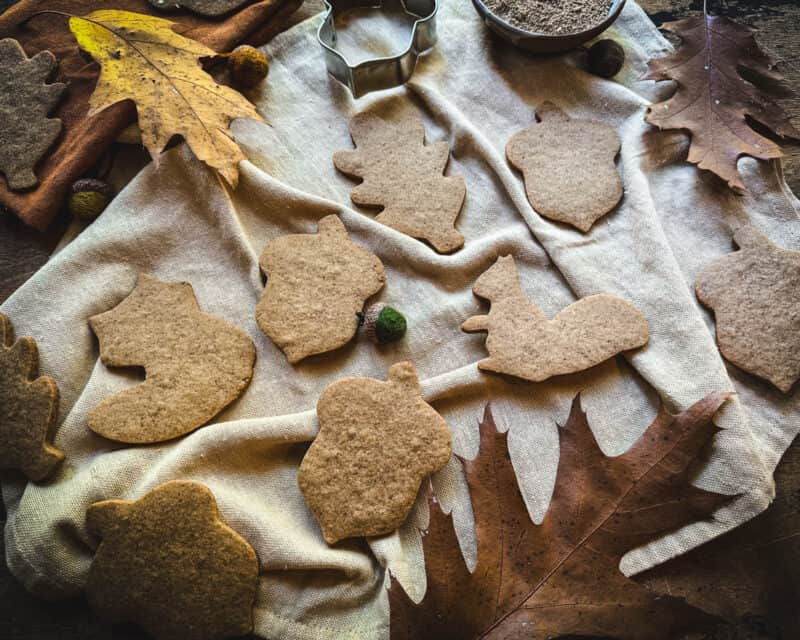
Acorn Recipes
Because there is so much variation in the kinds of acorns and how to process them, it’s best to choose a recipe and follow the processing instructions appropriate for the specific acorn food you want to make.
Here is a list of a few yummy-sounding acorn recipes, including my acorn flour cookies. I hope you try them out and consider adding acorns to your fall menu!
- Acorn flour
- Acorn mousse
- Acorn soup
- Acorn grits
- Acorn bread
- Acorn pancakes
- Acorn cookies
- Acorn cupcakes
Lucia Hadella is an environmental writer from Talent, Oregon. Her interests include human-environment interactions, climate change, and resilient futures. Lucia recently graduated from Oregon State University with a B.S. in Natural Resources and an M.A. in Environmental Arts & Humanities and moved to Columbus, OH this winter to begin her urban nature adventure! Find her on Instagram @true_nature_filter.

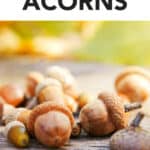
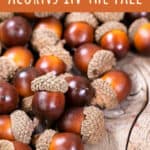

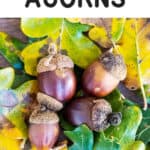

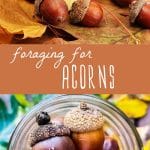

Great info! Last fall we had such an abundance of acorns it was overwhelming! They were so loud hitting our roof. Which I had read this last year. Can’t wait to try some of these recipes. Can you dry them in an oven set on the lowest (180)setting?
I have a park on the other side of my fence and there’s an oak tree on it. The acorns are always falling into my yard. They are a light tan, smaller and narrower than the ones seen in the photos on this post. Any idea what kind it might be?
Hi Megan. It could be any number of oak trees I suggest looking through a tree identification book for your area to find the specific species.
Thank you for the information. Been gathering Acorns for awhile now your info will make it so much easier.
I am in Southern Tasmanian and I have an oak near me that has big leaves but the acorns are like flat buttons, how would I go about identifying the species? Thank you
Hi Tracy. The first thing I would do is find a tree identification guide for your area. Oftentimes, guides provide a key at the beginning of the book that helps you narrow down your species.
Can you harvest and eat green acorns by letting them turn brown? If you can, will there be less tanins than if you picked them brown?
Hi Anna. It’s best practice to wait until the brown acorns fall to the ground before collecting them.
Oh! Thank you!
You’re welcome!